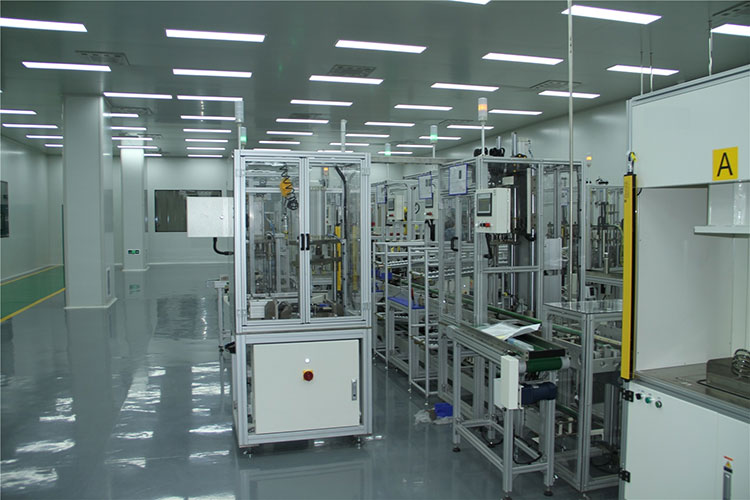Brushless Motor Production Line: Revolutionizing Efficiency and Innovation
2025-04-10
In today’s rapidly advancing world of technology, brushless motors have emerged as a cornerstone of innovation. From electric vehicles to home appliances, robotics, and industrial machinery, these motors are powering everything with greater efficiency, reduced maintenance needs, and higher durability. Behind the scenes of this technological leap is the brushless motor production line, a highly specialized and automated manufacturing process designed to meet the growing demand for these advanced motors.
But what exactly makes brushless motors so special, and how is the production line designed to manufacture them with precision and consistency? Let’s dive into the details of the brushless motor production line, its importance, and the role it plays in ensuring the quality of these essential components.
What is a Brushless Motor?
Before we explore the production line itself, it’s important to understand what a brushless motor is. Unlike traditional brushed motors that use brushes to make contact with a commutator, brushless motors utilize electronic controllers to switch the current direction and eliminate the need for brushes. This design offers several advantages, including:
1. Higher Efficiency: Brushless motors are more efficient because there’s no friction from brushes, reducing energy loss and heat generation.
2. Reduced Maintenance: Since there are no brushes that wear out over time, these motors require far less maintenance and have a longer lifespan.
3. Better Performance: Brushless motors offer smooth operation, reduced noise, and greater torque at higher speeds, making them ideal for applications where precision and reliability are crucial.
The Brushless Motor Production Line
The production line for brushless motors is a sophisticated process that involves several steps, each critical to ensuring the motor operates at peak performance. These steps include everything from the design phase to assembly, testing, and packaging. Below, we will break down the core stages involved in a brushless motor production line.
1. Material Selection and Preparation
The first step in the production line is selecting the right materials for the motor. High-quality materials are essential for creating durable and efficient motors. Typically, the components of a brushless motor include:
- Stator: Often made of high-quality laminated steel and copper wire.
- Rotor: Typically composed of high-strength magnets that provide the motor with its magnetic field.
- Electronic Controller: Integrated circuits that manage the switching of the motor's electrical current.
Once the materials are sourced, they undergo preparation to ensure they meet the required specifications for the motor's performance.
2. Stator Manufacturing
The stator is one of the most crucial parts of the brushless motor, and its production requires precise machining and winding processes. In the stator manufacturing stage, the following steps take place:
- Lamination of Steel Sheets: Steel sheets are cut into thin, laminated layers that help reduce energy loss caused by eddy currents.
- Winding: Copper wire is carefully wound onto the stator core to create the coils. The number of coils and their arrangement impacts the motor’s efficiency and performance.
- Insulation and Assembly: After winding, the coils are insulated to prevent electrical short circuits and then assembled into the stator housing.
3. Rotor Manufacturing
The rotor is another key component of the brushless motor, and its manufacturing involves several steps, including:
- Magnet Insertion: Strong permanent magnets are inserted into the rotor, typically using precision machinery to ensure the magnets are aligned correctly for maximum efficiency.
- Rotor Balancing: The rotor must be balanced to ensure smooth and vibration-free operation. This is a critical step, as any imbalance can lead to increased wear and reduced performance.
4. Assembly of Motor Components
Once the stator and rotor are ready, the next step in the production line is motor assembly. This involves combining all the motor components—stator, rotor, bearings, housing, and the electronic controller. The assembly process is typically automated, with robots or specialized machinery ensuring that all parts are precisely aligned and securely fastened.
At this stage, quality control checks are conducted to ensure that each component fits together correctly and functions as expected.
5. Testing and Calibration
Testing is one of the most critical stages in the brushless motor production line. The motor is subjected to a series of rigorous tests to ensure that it performs efficiently and meets the desired specifications. These tests often include:
- Electrical Tests: To check for proper current flow and ensure that the controller is switching currents accurately.
- Performance Tests: To verify the motor’s efficiency, torque, speed, and power output.
- Durability Tests: To simulate the wear and tear the motor might experience in real-world applications.
These tests help identify any defects or issues before the motor is shipped to customers.
6. Packaging and Shipping
After the motor passes all testing stages, it is carefully packaged for shipment. Packaging is done in such a way as to prevent any damage during transportation, ensuring that the motor arrives in perfect condition.
The motors are then shipped to various industries, ranging from automotive manufacturers and robotics companies to appliance makers and renewable energy providers.
Automation and Robotics in the Production Line
One of the defining features of modern brushless motor production lines is the level of automation and robotics used in the manufacturing process. Automated machines perform tasks such as winding the coils, inserting magnets, balancing the rotor, and even conducting testing. The use of robots and AI-driven technologies significantly improves the efficiency and precision of the production process, leading to:
- Reduced Human Error: Automated systems are far less prone to errors compared to manual labor, leading to higher-quality motors.
- Increased Production Speed: Automation allows for faster manufacturing, reducing lead times and meeting growing demand.
- Cost Efficiency: While setting up an automated production line may require a significant initial investment, the long-term cost savings from increased efficiency and reduced labor costs are substantial.
Conclusion
The brushless motor production line is a highly specialized and automated process designed to produce some of the most efficient and reliable motors on the market today. With their applications spanning from consumer electronics to electric vehicles and industrial machinery, the demand for brushless motors continues to rise.
As technology advances and industries strive for greater energy efficiency and sustainability, the role of brushless motors will only become more significant. Thanks to the innovations in their production lines, manufacturers can meet this growing demand while ensuring that every motor delivers top-notch performance, durability, and efficiency.



